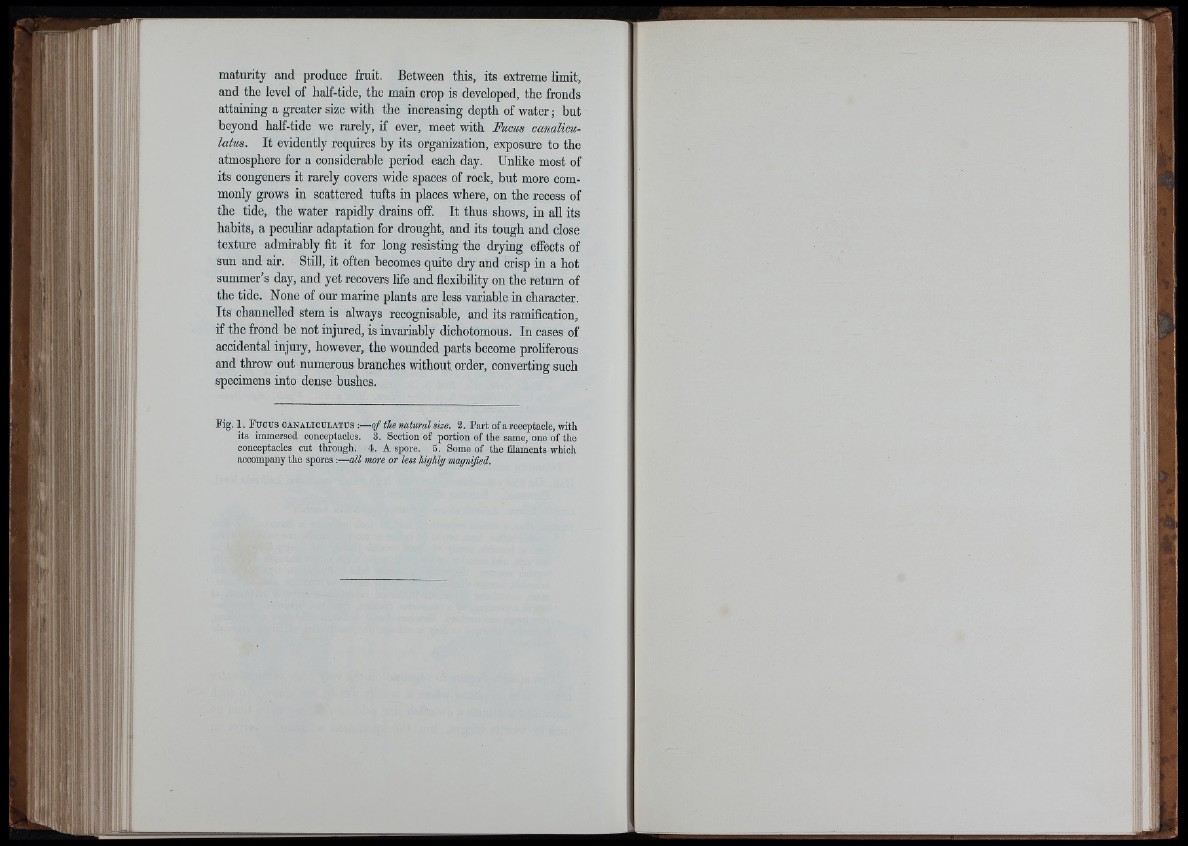
maturity and produce fruit. Between this, its extreme limit,
and the level of half-tide, the main crop is developed, the fronds
attaining a greater size with the increasing depth of water ; but
beyond half-tide we rarely, if ever, meet with Thms canaliculatus.
It evidently requires by its organization, exposure to the
atmosphere for a considerable period each day. Unlike most of
its congeners it rarely covers wide spaces of rock, but more commonly
grows in scattered tufts in places where, on the recess of
the tide, the water rapidly drains off. It thus shows, in all its
habits, a peculiar adaptation for drought, and its tough and close
texture admirably fit it for long resisting the drying effects of
sun and air. Still, it often becomes quite dry and crisp in a hot
summer’s day, and yet recovers life and flexibility on the return of
the tide. None of our marine plants are less variable in character.
Its channelled stem is always recognisable, and its ramification,
if the frond be not injured, is invariably dichotomous. In cases of
accidental injury, however, the wounded parts become prohferous
and throw out numerous branches without order, converting such
specimens into dense bushes.
Fig. 1. F u cu s c a n a l i c u l a t u s :— o f the natural size. 2. Part of a receptacle, with
its immersed conceptacles. 3. Section of portion of the same, one of the
conceptacles cut through. 4. A spore. 5. Some of the filaments which
accompany the spores :— all more or I
•' I I
:l lip
1:
»